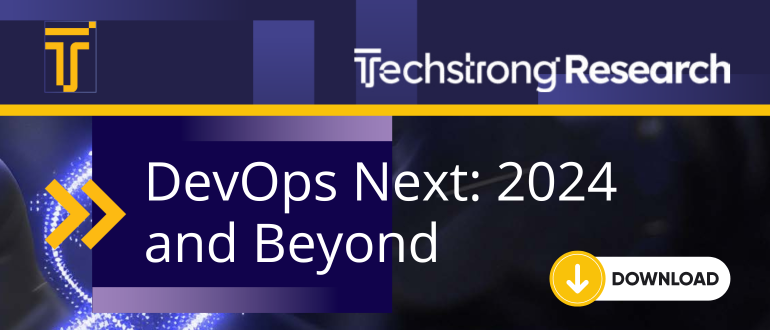
2024-10-30 08:8:1 Author: securityboulevard.com(查看原文) 阅读量:3 收藏
Automation: The Catalyst for Effective Threat Detection Engineering
It is no secret that security operations center (SOC) teams are inundated with more alerts than they can keep pace with. SOC automation is a necessity for common processes like alert triage, threat hunting, and incident response. For effective security operations (SecOps) the collaboration between SOC Analysts and Detection Engineers is more critical than ever. Automation emerges as a transformative force in this context, enhancing the synergy between these two vital roles. By streamlining repetitive tasks, reducing alert fatigue, and providing real-time insights, automation not only empowers SOC Analysts to focus on high-priority investigations but also enables Detection Engineers to refine and adapt their detection rules more effectively.
This introduction of automated detection engineering workflows promotes a more collaborative environment, allowing both teams to work in harmony, share critical information seamlessly, and respond to incidents with greater agility. Ultimately, automation is the catalyst for more efficient and proactive security operations, ensuring that organizations can stay one step ahead of emerging threats.
Before we dive into how Swimlane Turbine helps improve detection engineering, it’s important to understand the role that detection engineers play in SecOps.
The Basics of Threat Detection Engineering
What is the role of a Detection Engineer in a SOC?
A Detection Engineer specializes in creating and fine-tuning detection capabilities within a SOC. Their primary objective is to identify potential threats before they cause damage.
What is the relationship between Detection Engineers and SOC Analysts?
While Detection Engineers are focused on building and fine-tuning detection capabilities, SOC Analysts are on the front lines, actively monitoring alerts, investigating incidents, and responding to threats. The relationship between these roles is collaborative and essential for a robust security posture. Here are the three typical scenarios in which these teams work together:
- Alert Management: Detection Engineers typically focus on creating and fine-tuning detection rules based on known threats and vulnerabilities, while SOC Analysts use those rules to monitor, investigate, and respond to alerts generated by security systems. When an alert is triggered by a security information and event management (SIEM) or an endpoint detection and response (EDR) tool to determine if it is a true threat or a false positive. Effective communication between the two roles helps refine alert tuning and reduce unnecessary false positives
- Feedback Loop: SOC Analysts provide valuable feedback to Detection Engineers based on their experience with alerts. If certain alerts are frequently false positives or fail to catch real threats, analysts can communicate this information, enabling Detection Engineers to adjust detection rules accordingly. This feedback loop is crucial to continuous improvement in the detection process
- Knowledge Sharing: Detection Engineers and SOC Analysts will participate in joint sessions where they share knowledge about new threats, detection techniques, and incident response strategies. This collaboration helps to foster a broader understanding of both detections and real-world scenarios.
Enter The Swimlane Turbine Detection Engineering Extension
Swimlane Turbine is an AI-enhanced security automation platform. The platform is complemented by an ever-expanding list of pre-built connectors, solutions, extensions, widgets, and components available in Swimlane Marketplace. Automation extensions are plug-and-play-ready enhancements that boost platform functionality. Keep reading to learn more about the new Detection Engineering Extension that’s available in Swimlane Marketplace today.
The Swimlane Detection Engineering Extension is designed to give Detection Engineers and SOC Analysts the necessary tools and processes to effectively identify and iterate detections to ensure continuous improvement and optimal performance of SOC detection capabilities. Here is a high-level workflow diagram illustrating how it works.

3 Key Features & Capabilities of the Swimlane Turbine Detection Engineering Extension
- Threat Model Process Widget
Detection Engineers can build new detections using a best-in-class detection engineering process to ensure coverage of new and emerging threats. The extension offers a prescribed threat model workflow for a Detection Engineer to apply best practices to step through and log the detection.
- Security Incident Closure Codes
SOC Analysts will be able to identify and set relevant Detection Engineering closure codes. These codes are purpose-built templates designed to make it easier to measure detection efficacy. These closure codes help SOC Analysts and Detection Engineers collaborate seamlessly within Swimlane Turbine to facilitate knowledge sharing and promptly make improvements to detections.
- Detection Engineering Dashboard
SOC Analysts and Detection Engineers can easily review their organization’s overall detection posture using an out-of-the-box dashboard in Turbine. The dashboard includes a detection status widget that makes it easy to see the total number of detections in common stages like backlog, scoping, designing, building, staging, and production. The dashboard Sankey Chart shows which network log sources feed into detection tools, aiding in prioritizing detections.
View this guided tour of the Turbine Detection Engineering Extension to see how these features all come together.
In Conclusion
As cybersecurity threats continue to evolve, Swimlane’s Detection Engineering extension is front and center to help security organizations facilitate better communication and collaboration between teams. As Detection Engineers and SOC teams use the Swimlane Detection Engineering Extension, they can ensure that organizations swiftly adapt to the changing threat landscape, and safeguard their customers’ digital assets and environments.
To see how Swimlane Turbine can support your SOC team, request a demo.
Request a demo
If you haven’t had the chance to explore Swimlane Turbine yet, request a demo.
如有侵权请联系:admin#unsafe.sh

